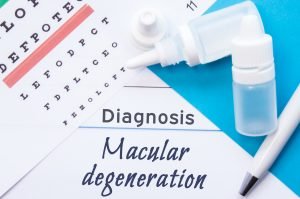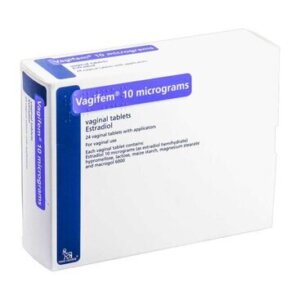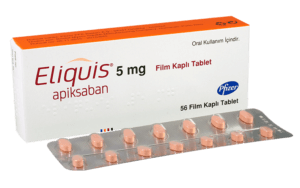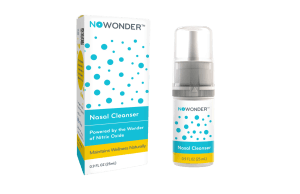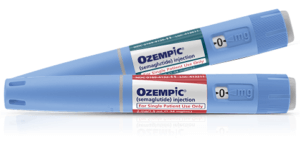Age-related macular degeneration is the leading cause of blindness for those over the age of 60. While some treatments can help reduce the progression of the disease, there is currently no cure. But there is hope. Researchers are leading the way in developing a stem-cell therapy that could save the sight of millions of people worldwide.
What is Macular Degeneration?
Macular degeneration affects the central portion of the retina. It is most common in people over the age of 60. This is why it is often referred to as age-related macular degeneration (AMD).
There are two types of AMD: what is known as the “dry form” and the “wet form”. Vision is not affected in the early stages of the disease, but as the disease progresses, it causes blurred vision. People can lose their central vision completely if the disease continues to worsen. Patients are usually able to retain their peripheral vision, as AMD affects only the central part of the retina.
Dry and Wet Forms of Macular Degeneration
The dry form of AMD occurs when yellow deposits appear on the macula. A few deposits may not affect vision, but they can grow in both size and number. Patients may experience blind spots in their vision. Some patients may lose central vision altogether in the more advanced stages.
The wet form happens when there is an abnormal growth of blood vessels under the macula. The blood vessels leak fluid and blood into the retina, causing blurred vision and blind spots. It can also make straight lines look wavy. Once they form a scar, a patient will experience permanent vision loss.
Only about 10% of people with AMD develop the wet form, but these people make up the majority of those who suffer from serious vision loss due to the disease.
What are the symptoms of macular degeneration?
Macular degeneration affects approximately 10 million people in the United States. It’s the leading cause of blindness, and it affects more people than cataracts and glaucoma together. Symptoms include blurred vision, decreased visual acuity, dark and blurry areas in the center, and diminished color perception. This differs from glaucoma in that glaucoma affects peripheral vision, whereas AMD affects central vision. Cataracts, on the other hand, lead to poor night vision, problems with light, and faded colors.
What causes AMD?
As the name suggests, age is the leading risk factor for macular degeneration. Currently, the disease is not well understood, and the causes of AMD are not conclusively known. Scientists are working to understand why macula cells deteriorate. Since people with a family history of AMD develop the condition more frequently than normal, there appears to be an inherited risk. Caucasians are also more at risk than African Americans and Hispanics.
In 2010, 2.5% of white adults over 50 had AMD, while only 0.9% of black adults and people of other races had it. Smoking also doubles the risk of developing AMD.
What are the treatment options for macular degeneration?
There is currently no cure for AMD, but several treatments are available to prevent severe vision loss, including medications, laser therapy, vision aids, and surgery.
For wet macular degeneration, the primary treatment involves intravitreal injections of anti-VEGF medications, such as Eylea (aflibercept). These medications help to stop the growth of abnormal blood vessels and reduce fluid leakage. Currently, there are no FDA-approved treatments for dry macular degeneration.
Scientists at the Hadassah University Medical Center in Jerusalem have conducted clinical trials researching stem-cell therapy for AMD. It has been tested on patients with advanced AMD and has received fast-track approval for further trials in the United States. Currently, scientists are seeking additional volunteers for clinical trials. The commercialization of this therapy will depend on its success, as well as the availability of financing.
Another Israeli solution for AMD is ForeseeHome, which is an FDA-approved home monitoring device. ForeseeHome is an early warning system that can help detect wet age-related macular degeneration (AMD) earlier. It detects changes in vision that might indicate if the disease is progressing from the dry to the wet form. The ForeseeHome device is not sold; it’s part of a comprehensive remote monitoring service. It can be free for patients, depending on their insurance coverage. Patients without insurance coverage may have to pay just $78 per month for the monitoring fee.
Questions people ask about age-related macular degeneration
What does AMD do to the eye?
Age-related macular degeneration (AMD) begins to affect vision when aging causes damage to the macula, the part of the eye responsible for sharp, straight-ahead vision.
How do you treat AMD eyes?
The main treatments for age-related macular degeneration should be given by an optometrist or an ophthalmologist. Treatments for wet AMD include: injections of medicine (anti-VEGF) given directly into the eyes and light therapy to destroy the blood vessels that cause wet AMD. There are no treatments yet for dry macular degeneration.
What are the first signs of macular degeneration?
The earliest signs of macular degeneration often include subtle changes in central vision, such as a slight blurriness or distortion, especially when looking at straight lines or reading. Some individuals may also experience difficulty seeing in low light or a decrease in color intensity.

